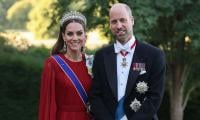Life and politics of Benazir Bhutto
Former prime minister Benazir Bhutto was not the product of famous Gate-IV, but her political journey is full of struggle and courage till her assassination on this day at Liaquat Bagh, Rawalpindi; the city which also witnessed the execution of her father Zulfikar Ali Bhutto. At times she did face criticism for some compromises but carried the political legacy well.
Let’s have a look at her political struggle as her assassination still remains a big mystery and wonder whether this case would also remain unresolved like that of former prime minister Liaquat Ali Khan. Two years in ‘Sukkur Prison’ was one of the toughest for former premier Benazir Bhutto as she was kept in a cell exposed to other prisoners. With tears in her eyes she once revealed her ordeal many years ago.
It was in 1981, when she was arrested during a raid at the residence of Dr Ashraf Abbasi in Gulshan-e-Iqbal, after police could not find her in a raid at 70-Clifton, where police arrested Begum Nusrat Bhutto. She was later taken to New Town Police Station as the martial law authorities wanted her to ‘cooperate’ and contact Murtaza Bhutto to end the hijacking drama of PIA airliner.
“Ex-governor Lt Gen Abbasi (retd) was furious and ordered her arrest at any cost and citywide alert was issued,” disclosed a senior police officer, who arrested her and about the kind of pressure he went through.
When we entered the house Benazir got angry as police had no search or arrest warrants. “I told her to cooperate or get ready to face the consequences as I have orders from high command,” he added.
It was the same period when PIA plane was hijacked by Al-Zulfikar Organisation (AZO) and though BB had nothing to do with it the authorities wanted to use her arrest to bargain.
Benazir Bhutto told the authorities that she had nothing to do with such politics and always opposed to it nor she was in contact with Murtaza. However, she was asked to use her influence on Murtaza for peaceful end to hijacking and she agreed. Later, the idea was dropped as the martial law authorities wanted to drag the event to gain political advantage out of the situation and hijacking lasted for record 13 days.
Although there was no case against her but the police was told to shift her to Sukkur and keep her in prison till further orders. Two years later in 1983, after the MRD movement, both Begum Nusrat Bhutto and Benazir Bhutto were under house arrest and later sent in exile and remained abroad till their return in 1986, when former prime minister Mohammad Khan Junejo lifted the ban on civil liberties and withdrew the undeclared ban on her.
She herself described prison in Sukkur as toughest, not because of weather or ‘class’ in which she was kept (it was not A or B class). “It was quite tough as the cell was exposed and there was no privacy, other prisoners could watch me, perhaps toughest period as they wanted to test my nerves and wanted to break me,” she once told this scribe.
Earlier, Benazir Bhutto made her presence felt when after Bhutto’s arrest she decided to launch October 1977 election campaign for the party along with her mother. She used to visit the PPP Secretariat and made both late Jehangir Badar from Lahore and late Qamar Abbas from Peshawar as her coordinators. They organised meetings for her.
She had never forgotten her last meeting with her father in the death cell, a night before his hanging. “Bhutto sb advised me, be brave and get ready for a difficult period ahead”. She told me in one of the interviews with her.
One of the PPP veterans recalled the period when she started her political journey. “She even used to share with us her campaign at Oxford University, when she got elected as union president”.
Her real test started after Bhutto’s execution. “I was completely broken and lost all hopes so was my mother and other family members. But since I had pledged with my father that I would carry his mission, I decided to play more active role,” she herself described the tough period of her life in an interview.
While she was under house arrest, she was brought to record her famous statement in the case against leaders of Communist Party of Pakistan, Jam Saqi and others tried for sedition and treason. She defended the accused and called them patriotic citizens.
Those were the years when she had more radical views. When the court asked about her ‘cast’ she replied, “I don’t believe in cast’.
However, when she returned from exile in 1986 and was received at Lahore by around five lakh people the then establishment got scared as once confessed by former ISI chief late Gen Hameed Gul to me.
“It is true that the establishment was not expecting such a big reception. We thought that if she travelled like this around the country things could become more difficult for us as she could take revenge of her father’s hanging,” he told me in an interview.
However, when I first met her I found her a true patriot in her and was convinced that she believed in reconciliation and not in revenge, he added.
During the second phase of MRD movement in 1986, which failed but Benazir Bhutto led a rally from Lyari and faced heavy ‘lathi charge’ and tear gas. She faced similar situation in the 90s, when she led one such rally in Rawalpindi and surprised police and intelligence agencies when she suddenly surfaced.
After 1986, Benazir followed the policy of reconciliation with the establishment and she once explained. “I decided to fence my differences with them in 1988 as I realised that confrontation means more problems for thousands of our workers who were in prison, some were hanged for their love for Bhutto, other faced lashes and tough prison life. I wanted early relief for them”.
About her second compromise with ex-Gen Pervez Musharraf, she told me that it was the former president, who approached me for ‘reconciliation’ and asked me to return. “I told him that a number of cases are pending against me, my husband and party workers. He said he would withdraw all the cases against them. Later, all cases against the PPP and the MQM were withdrawn”.
Later, when he asked her to return after 2007 elections, she refused and despite his warning came back and in the end faced the consequences with two most serious attacks on any political party on October 18, 2007 in Karachi in which over 200 PPP workers were killed and the other one on December 27, in which she was among 50 PPP workers killed.
One could disagree with some of her political ideas and decisions but no one could take the credit from her for leading her party with courage and in the end gave her life with her party workers at Liaquat Bagh.
She carried the legacy of her father but suffered the most and led a successful struggle and regained power. The PPP could not recover after her death despite party returning to power in 2008.
The political vacuum created as a result of her assassination could not be filled easily and it would be quite a challenge for new PPP Chairman Bilawal Bhutto Zardari as after BB’s death PPP completely lost Punjab in 2013 elections.
It was unfortunate that during the PPP rule from 2008 to 2013, Benazir Bhutto’s murder trial could not be completed and above all the man she suspected to be possibly behind the conspiracy was given red-carpet farewell and the PPP-PML-N ministers took oath from former president Musharraf.
Young Bilawal Bhutto has time on his side but politics has changed and so is political perception. Can he give something new and different to attract the masses and regain the lost confidence?
The writer is a senior columnist and analyst of Geo, The News and Jang.
Twitter: @MazharAbbasGEO
-
 Caitlyn Jenner Finally Reacts To Kylie, Timothee Chalamet Relationship
Caitlyn Jenner Finally Reacts To Kylie, Timothee Chalamet Relationship -
 Prince William’s Beefed Up PR All Set To Fight Off ‘plot’ And ‘it Might Not Be Long’
Prince William’s Beefed Up PR All Set To Fight Off ‘plot’ And ‘it Might Not Be Long’ -
 Kate Middleton Ups A New Role Unofficially For King Charles As William Prepares His Coronation
Kate Middleton Ups A New Role Unofficially For King Charles As William Prepares His Coronation -
 Teyana Taylor Says She Misread Leonardo DiCaprio Globes Moment
Teyana Taylor Says She Misread Leonardo DiCaprio Globes Moment -
 A$AP Rocky Reveals What Encouraged Him To Date Rihanna
A$AP Rocky Reveals What Encouraged Him To Date Rihanna -
 Newborns At Risk: Health Experts Warn Your Baby Could Already Have Diabetes
Newborns At Risk: Health Experts Warn Your Baby Could Already Have Diabetes -
 Sarah Ferguson Updates Her Plans Now That Andrew’s Eviction Is Nine Days Away
Sarah Ferguson Updates Her Plans Now That Andrew’s Eviction Is Nine Days Away -
 Hailey Bieber Sends Cease And Desist To TikToker
Hailey Bieber Sends Cease And Desist To TikToker -
 Kate Middleton Celebrates England Women's Rugby Stars After World Cup Win
Kate Middleton Celebrates England Women's Rugby Stars After World Cup Win -
 Kris Jenner Dubs Chicago West Her 'sweet Angel' As She Turns Eight
Kris Jenner Dubs Chicago West Her 'sweet Angel' As She Turns Eight -
 Josh Charles Credits Taylor Swift For His, Ethan Hawke’s Moon Person Trophies
Josh Charles Credits Taylor Swift For His, Ethan Hawke’s Moon Person Trophies -
 Jodie Foster Voices Opinion About 'misogyny'
Jodie Foster Voices Opinion About 'misogyny' -
 Virginia Madsen Remembers Late Brother Michael Madsen Six Months After His Death
Virginia Madsen Remembers Late Brother Michael Madsen Six Months After His Death -
 Emilia Clarke Reveals Real Price Of Playing Daenerys In 'Game Of Thrones'
Emilia Clarke Reveals Real Price Of Playing Daenerys In 'Game Of Thrones' -
 Ex-Chicago Mayor Hit With Lawsuit Over Unpaid Credit Card Bills
Ex-Chicago Mayor Hit With Lawsuit Over Unpaid Credit Card Bills -
 Andrew Risks His Relationships With Princess: ‘She’s Supporting The Abused And It’s Festering’
Andrew Risks His Relationships With Princess: ‘She’s Supporting The Abused And It’s Festering’



